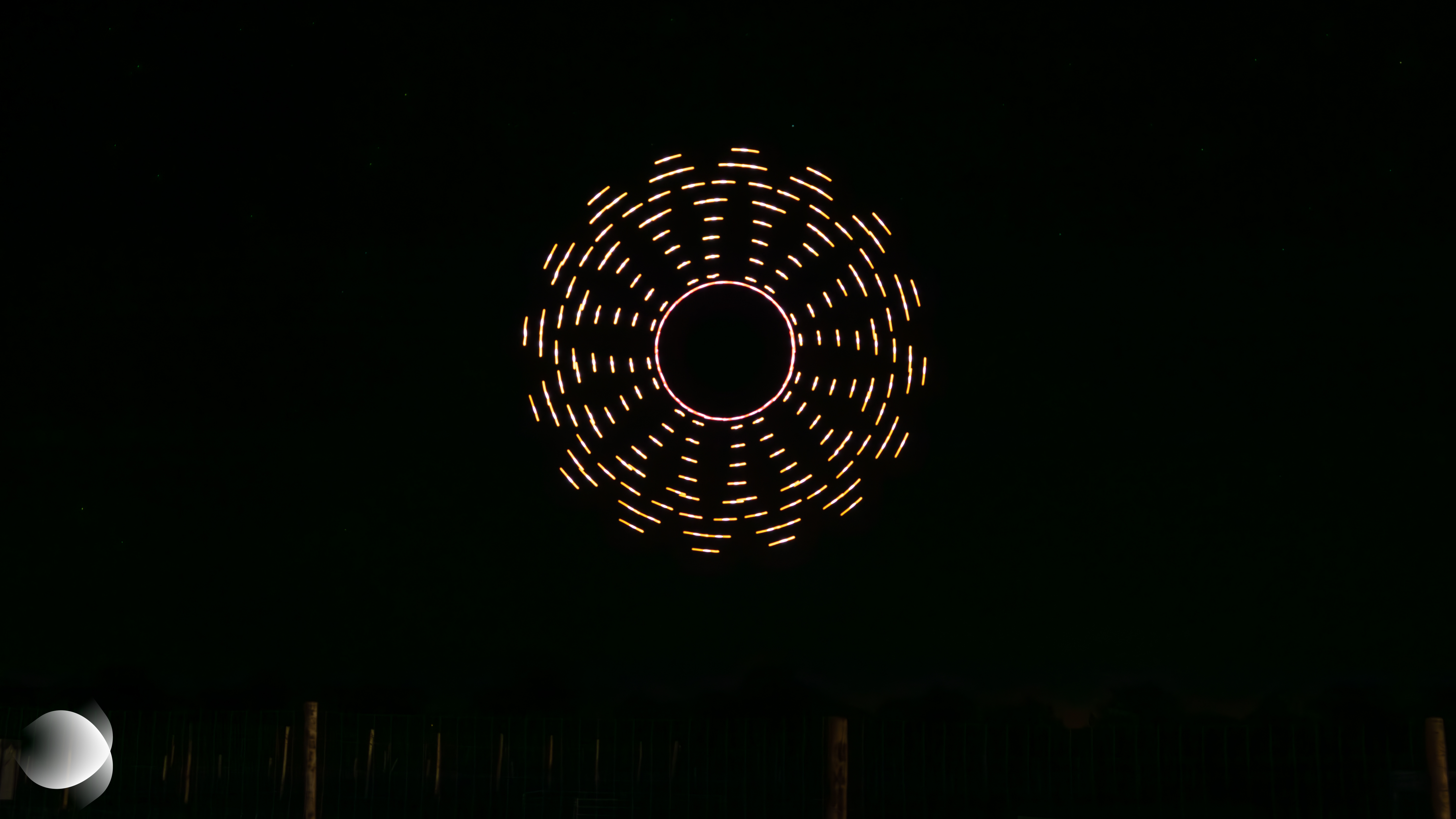14 MARCH 2025
The history of drone shows
Discover their history, from the first trials to today's grandiose shows !
Drone shows have revolutionized the world of entertainment in just a few short years.
Let's take a look at their history, from their earliest days to the present day, captivating millions of spectators worldwide.
The beginnings: from experimentation to the first illumination of the sky.
After months of experimentation, testing and programming, it was in late 2012 that Ars Electronica, based in Linz, Austria, carried out a first flight of some twenty drones at the Donauparkstadium in Linz, followed by a first public flight on the banks of the Danube, thus becoming the first flight of illuminated drones in a swarm in front of an audience anywhere in the world.
By 2013, the company was already beginning to travel to put on shows, notably in London where they created the Star Trek logo near Tower Bridge, or in Dubai for a flight of 36 drones on National Day near the Burj Al Arab.
Then other experiments were conducted by researchers and technology companies, fascinated by the artistic potential of drones. In November 2015, Intel marked a turning point with the “Drone 100” project, a world-record-breaking first performance by 100 drones, all synchronized to Beethoven's 5th Symphony played by an orchestra on the “Flugplatz Ahrenlohe” airfield in Tornesch, Germany.
The rise of drone shows: innovation and new possibilities.

Over the years, drone technology has progressed, enabling ever more complex and immersive choreography. Specialized companies have sprung up, offering ever more grandiose artistic performances. Today's drones are capable of flying large fleets with centimetric precision, and can even incorporate pyrotechnic effects for an even more impressive effect.
After all its first major advances, the main players in the world of drone shows were thinking of becoming, in a way, the biggest competitor to traditional pyrotechnic shows, offering a sustainable and ecological alternative by reducing noise and air pollution.
Since its creation in 2022, Diffuse and a handful of other companies have been proposing the marriage of these two artistic elements. At Diffuse, our team comes from the world of pyrotechnics, and our ambition is to push back the boundaries of the imaginary by offering multi-disciplinary shows. Since then, we've noticed that the vision has evolved, and more and more companies are proposing to combine these two arts.

In the space of just a decade, drone shows have gone from the experimental stage to a performing art form in their own right, revolutionizing the world of entertainment. Initially presented as the enemy of fireworks, drone shows have become their best ally! Today, only the biggest and best companies understand this, because pitting fireworks against drone shows is not the way to solve the environmental problem.
The pyrotechnics industry has evolved enormously over the last fifteen years in response to ecological challenges. Today, the vast majority of fireworks are made exclusively from recycled cardboard and paper. No debris” product ranges, which leave no residue on the ground, have also been developed, as well as refillable single-shots, which considerably reduce fireworks waste at the end of a show.
The false argument that drones are a fundamentally greener alternative to fireworks is often used by start-up companies to secure funding and win over their first customers. Paradoxically, however, it is these same companies that later end up integrating pyrotechnic effects into their shows, proving that these two technologies are not opposites, but complements. All this evolution in just a decade, so imagine what drone shows could be like in the next few years!



